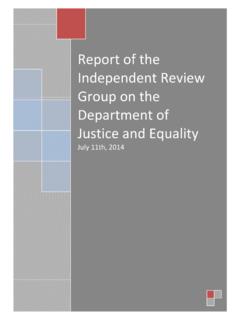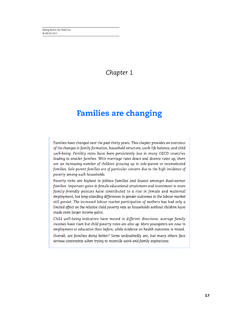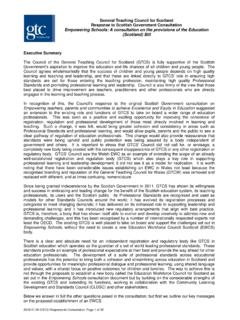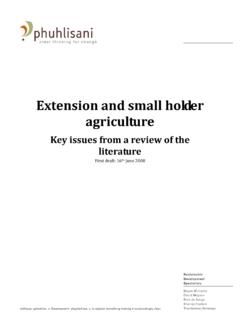Transcription of National Disability Inclusion Strategy 2017-2021
1 National DisabilityInclusion Strategy 2017 -2021 National Disability Inclusion Strategy 2017 - 20211 Foreword I am delighted, in my capacity as Minister of State with special responsibility for Disability Issues, to present the National Disability Inclusion Strategy for the years 2017 2021 inclusive. This Strategy is a whole of Government approach to improving the lives of people with disabilities both in a practical sense, and also in creating the best possible opportunities for people with disabilities to fulfil their potential. One of my key priorities when I became Minister of State was to meet with as many people with disabilities as possible.
2 For me, it was essential to learn first-hand about the challenges and practical difficulties that they face. It was also vitally important to hear about what people s real needs were, and to get advice on what things would make a measurable difference in their lives. I have been inspired by the goals and achievements of the people I met, and am more determined than ever to realise the priorities agreed by the Government and make the changes that are is an issue that will affect us all in our lifetimes. According to the 2011 census, there are almost 600,000 people living with a Disability in Ireland. Many of us have family members, friends or colleagues with disabilities, and in an ageing society we are all likely to live to an age when we will experience Disability ourselves.
3 Disability is about all of us, and the Strategy should be of interest to everyone. It is underpinned by a vision of an Irish society in which people with disabilities enjoy equal rights and opportunities to participate in social and cultural life, can work if they want to do so, have choice and control over how they live their lives, and can reach their full my appointment as Minister of State, I have said that ratification of the United Nations Convention on the Rights of Persons with Disabilities (CRPD) is one of my key goals, and even though the process is taking longer than I had hoped, I remain completely committed to this outcome. Before we ratify the Convention, enactment of new legislation and amendment of existing legislation is required to ensure obligations will be met upon entry into force for Ireland.
4 Ratification of a Convention before we have amended domestic legislation that contradicts it makes no sense and does nothing to ensure compliance or to protect the people for whose benefit the Convention exists. Considerable progress has already been made - the Disability (Miscellaneous Provisions) Bill 2016, the primary purpose of which is to address the remaining legislation barriers to Ireland s ratification of the CRPD was published prior National Disability Inclusion Strategy 2017 - 20212to Christmas and completed Second Stage in February 2017 . The work that remains to be done is outlined in the Strategy , and I am working closely and determinedly with all of the stakeholders to ensure that the remaining barriers are removed without unnecessary delay.
5 This Inclusion Strategy is the outcome of a broad and comprehensive consultation process that comprised three distinct phases. Phase one included an initial round of consultations, the aim of which was to identify the priority themes to be addressed in a new Strategy . A second phase was then commenced to identify and agree specific objectives under each of the themes identified in Phase one. Phase three focused on identifying precise and measurable actions and timescales for achievement of each of the objectives that emerged from Phase two. For the last 12 months, I have been working with the National Disability Authority (NDA) and senior officials across multiple government departments to identify which of the actions generated in phase three can be implemented over the next four years.
6 These actions have the full backing of the Taoiseach and ministers through the Cabinet Committee on Social Policy and Public Service Reform. All of the identified initiatives have been developed to have the maximum beneficial impact for people who have disabilities. However, to my mind, there are a number that are clear priorities, not just because of the potential that they have to transform people s lives when fully implemented, but because when taken together they have the power to promote a fundamental culture shift in relation to Disability . By this, I mean that the initiatives, when they have moved off the pages of a document and become the established way of doing things, have the capacity to significantly impact on the way in which services support people with disabilities.
7 All of us people with disabilities and people without disabilities will be the beneficiaries of this. Individually, I believe the following initiatives will in their cumulative effect be life-changing for very many people: Extension of Irish Sign Language remote interpretation service to evenings and weekends; Resourcing of the Sign Language Interpretation Service to increase the number of trained Sign Language and Deaf Interpreters, the establishment of a quality-assurance and registration scheme for interpreters, and on-going professional training and development; Legislation that will ensure that all public bodies provide Irish Sign Language users with free interpretation when accessing or availing of their statutory services; Examination of the recommendations of the Make Work Pay Working Group National Disability Inclusion Strategy 2017 - 20213 with a view to introducing meaningful reforms that make it financially worthwhile for a person with a Disability to take up employment; Implementation of the Comprehensive Employment Strategy for Persons with Disabilities, including an increase of the public service employment target from 3% to 6%, the arrangement of special public service competitions and the opening up of alternative recruitment channels; A review of transport supports to determine the type of cross departmental transportation options that will best help people with a range of disabilities to get to work, and implementation of the most viable proposals.
8 Development of proposals to address access to, or affordability of, necessary aids, appliances and assistive technologies required for everyday living, for those people with disabilities whose entry, retention or return to work could be jeopardised due to being unable to afford these items; Introduction of a scheme that will significantly reduce the notice time for travelling for mobility-impaired customers requiring assistance; Development of proposals in relation to attaching conditions regarding wheelchair accessibility on passenger licensed services; Examination of the recommendations of the report of the Personalised Budgets Task Force, with a view to introducing the option of availing of a personal budget as one approach to individualised funding; Development of Codes of Practice to support implementation of the Assisted Decision-Making (Capacity) Act 2015; Full implementation of the Access and Inclusion Model of supports for children with disabilities to allow every child to participate meaningfully in the Early Childhood Care and Education Scheme.
9 And Full implementation of the Transforming Lives programme, with particular reference to advancing the Time to Move On agenda (decongregation), the New Directions programme (reforming adult day services), and the move towards person centred planning for residential and day would like to thank everyone who contributed to and participated in the consultative process, including civil society organisations across the Disability Sector, individuals with lived experience of Disability , the Disability Stakeholders National Disability Inclusion Strategy 2017 - 20214 Group (DSG), the National Disability Inclusion Strategy Steering Group (NDISSG), the NDA, the National Disability Strategy Interdepartmental Commitee and officials from a range of relevant government departments.
10 Through my chairing of the NDISSG, I was able to observe first-hand how the Strategy improved and took shape as a result of the collaboration and collegiate approach of stakeholders, and the incorporation of their incisive inputs and is the responsibility of every government minister, and that is why I have been working to ensure a whole of Government approach is taken. However, it is not just the Government that can be an agent of change. Organisations in the Disability Sector have a critical role to play in ensuring the Strategy is a success. As individuals, there is an onus on us all too, to care about and engage with the issues and to be proactively involved in positive changes to the world we live in. Although departments and statutory bodies are responsible for implementing the actions in the Strategy , I view the Strategy as a collaborative effort.










